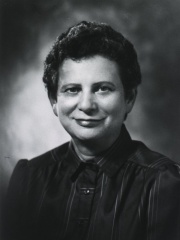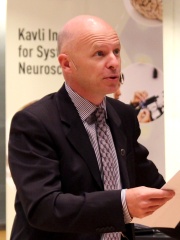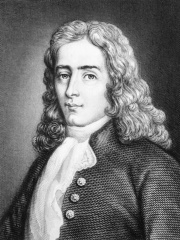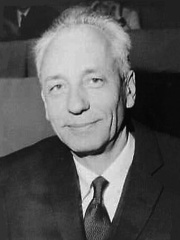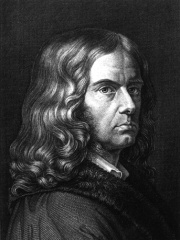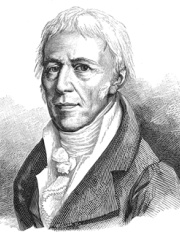
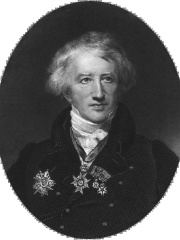
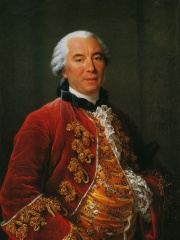
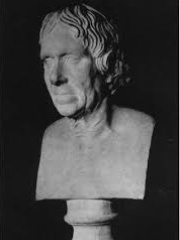
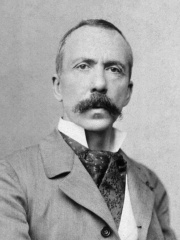
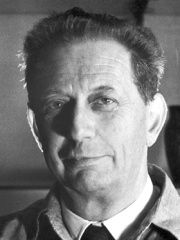

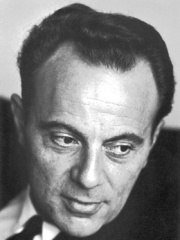
The Most Famous
BIOLOGISTS from France
This page contains a list of the greatest French Biologists. The pantheon dataset contains 1,097 Biologists, 132 of which were born in France. This makes France the birth place of the 4th most number of Biologists behind Germany, and United Kingdom.
Top 10
The following people are considered by Pantheon to be the top 10 most legendary French Biologists of all time. This list of famous French Biologists is sorted by HPI (Historical Popularity Index), a metric that aggregates information on a biography's online popularity. Visit the rankings page to view the entire list of French Biologists.

1. Jean-Baptiste Lamarck (1744 - 1829)
With an HPI of 82.06, Jean-Baptiste Lamarck is the most famous French Biologist. His biography has been translated into 89 different languages on wikipedia.
Jean-Baptiste Pierre Antoine de Monet, chevalier de Lamarck (1 August 1744 – 18 December 1829), often known simply as Lamarck (; French: [ʒɑ̃batist lamaʁk]), was a French naturalist, biologist, academic, and soldier. He was an early proponent of the idea that biological evolution occurred and proceeded in accordance with natural laws. Lamarck fought in the Seven Years' War against Prussia, and was awarded a commission for bravery on the battlefield. Posted to Monaco, Lamarck became interested in natural history and resolved to study medicine. He retired from the army after being injured in 1766, and returned to his medical studies. Lamarck developed a particular interest in botany, and later, after he published the three-volume work Flore françoise (1778), he gained membership of the French Academy of Sciences in 1779. Lamarck became involved in the Jardin des Plantes and was appointed to the Chair of Botany in 1788. When the French National Assembly founded the Muséum national d'Histoire naturelle in 1793, Lamarck became a professor of zoology. In 1801, he published Système des animaux sans vertèbres, a major work on the classification of invertebrates, a term which he coined. In an 1802 publication, he became one of the first to use the term "biology" in its modern sense. Lamarck continued his work as a premier authority on invertebrate zoology. He is remembered, at least in malacology, as a taxonomist of considerable stature. The modern era generally remembers Lamarck for a theory of inheritance of acquired characteristics, called Lamarckism (accurately named after him), soft inheritance, or use/disuse theory, which he described in his 1809 Philosophie zoologique. Though, the idea of soft inheritance antedates him, and while it was a small element of his theory of evolution, in his time it was accepted by many natural historians. Lamarck's idea of use/disuse later aligned with Darwin's idea of natural selection and is believe to in part have inspired Darwin, who ended up proving Lamarckism with his own theory. Lamarck's contribution to evolutionary theory consisted of the first truly cohesive theory of biological evolution, in which an alchemical complexifying force drove organisms up a ladder of complexity, and a second environmental force adapted them to local environments through use and disuse of characteristics, differentiating them from other organisms. Scientists have debated whether advances in the field of transgenerational epigenetics mean that Lamarck was to an extent correct, or not.

2. Georges Cuvier (1769 - 1832)
With an HPI of 77.69, Georges Cuvier is the 2nd most famous French Biologist. His biography has been translated into 70 different languages.
Jean Léopold Nicolas Frédéric, baron Cuvier (23 August 1769 – 13 May 1832), known as Georges Cuvier (; French: [ʒɔʁʒ(ə) kyvje]), was a French naturalist and zoologist, sometimes referred to as the "founding father of paleontology". Cuvier was a major figure in natural sciences research in the early 19th century and was instrumental in establishing the fields of comparative anatomy and paleontology through his work in comparing living animals with fossils. Cuvier's work is considered the foundation of vertebrate paleontology, and he expanded Linnaean taxonomy by grouping classes into phyla and incorporating both fossils and living species into the classification. Cuvier is also known for establishing extinction as a fact—at the time, extinction was considered by many of Cuvier's contemporaries to be merely controversial speculation. In his Essay on the Theory of the Earth (1813), Cuvier proposed that now-extinct species had been wiped out by periodic catastrophic flooding events. In this way, Cuvier became the most influential proponent of catastrophism in geology in the early 19th century. His study of the strata of the Paris basin with Alexandre Brongniart established the basic principles of biostratigraphy. Among his other accomplishments, Cuvier established that elephant-like bones found in North America belonged to an extinct animal he later would name a "mastodon", and that a large skeleton dug up in present-day Argentina was of a giant, prehistoric ground sloth, which he named Megatherium. He also established two ungulate genera from the Paris Basin named Palaeotherium and Anoplotherium based on fragmentary remains alone, although more complete remains were later uncovered. He named the pterosaur Pterodactylus, described (but did not discover or name) the aquatic reptile Mosasaurus, and was one of the first people to suggest the earth had been dominated by reptiles, rather than mammals, in prehistoric times. Cuvier is also remembered for strongly opposing theories of evolution, which at the time (before Darwin's theory) were mainly proposed by Jean-Baptiste de Lamarck and Geoffroy Saint-Hilaire. Cuvier believed there was no evidence for evolution, but rather evidence for cyclical creations and destructions of life forms by global extinction events such as deluges. In 1830, Cuvier and Geoffroy engaged in a famous debate, which is said to exemplify the two major deviations in biological thinking at the time – whether animal structure was due to function or (evolutionary) morphology. Cuvier supported function and rejected Lamarck's thinking. Cuvier also conducted racial studies which provided part of the foundation for scientific racism, and published work on the supposed differences between racial groups' physical properties and mental abilities. Cuvier subjected Sarah Baartman to examinations alongside other French naturalists during a period in which she was held captive in a state of neglect. Cuvier examined Baartman shortly before her death, and conducted a dissection following her death that disparagingly compared her physical features to those of monkeys. His most famous work among the general public was the Preliminary Discourse of the Recherches sur les ossemens fossiles de 1812, which was published as a separate in 1821 and in book form in 1825, with the title Discours sur les révolutions de la surface du Globe. The evolution of his ideas on Comparative Anatomy, Paleontology, and pre-Darwinian Natural History can be seen by comparing these works in the form of a Variorum. Another important work was Le Règne Animal (1817; English: The Animal Kingdom). In 1819, he was created a peer for life in honour of his scientific contributions. Thereafter, he was known as Baron Cuvier. He died in Paris during an epidemic of cholera. Some of Cuvier's most influential followers were Louis Agassiz on the continent and in the United States, and Richard Owen in Britain. His name is one of the 72 names inscribed on the Eiffel Tower.

3. Georges-Louis Leclerc, Comte de Buffon (1707 - 1788)
With an HPI of 77.16, Georges-Louis Leclerc, Comte de Buffon is the 3rd most famous French Biologist. His biography has been translated into 65 different languages.
Georges-Louis Leclerc, Comte de Buffon (French: [ʒɔʁʒ lwi ləklɛʁ kɔ̃t də byfɔ̃]; 7 September 1707 – 16 April 1788) was a French naturalist, mathematician, and cosmologist. He held the position of intendant (director) at the Jardin du Roi, now called the Jardin des plantes. Buffon's works influenced the next two generations of naturalists, including two prominent French scientists Jean-Baptiste Lamarck and Georges Cuvier. Buffon published thirty-six quarto volumes of his Histoire Naturelle during his lifetime, with additional volumes based on his notes and further research being published in the two decades following his death. Ernst Mayr wrote that "Truly, Buffon was the father of all thought in natural history in the second half of the 18th century". Credited with being one of the first naturalists to recognize ecological succession, he was forced by the theology committee at the University of Paris to recant his theories about geological history and animal evolution because they contradicted the biblical narrative of Creation.

4. Louis Jean Pierre Vieillot (1748 - 1831)
With an HPI of 75.90, Louis Jean Pierre Vieillot is the 4th most famous French Biologist. His biography has been translated into 39 different languages.
Louis Pierre Vieillot (French pronunciation: [lwi pjɛʁ vjɛjo]; 10 May 1748, Yvetot – 24 August 1830, Sotteville-lès-Rouen) was a French ornithologist. Vieillot is the author of the first scientific descriptions and Linnaean names of a number of birds, including species he collected himself in the West Indies and North America and South American species discovered but not formally named by Félix de Azara and his translator Sonnini de Manoncourt. He was among the first ornithologists to study changes in plumage and one of the first to study live birds. At least 88 of the genera erected by Vieillot are still in use.

5. Luc Montagnier (1932 - 2022)
With an HPI of 75.42, Luc Montagnier is the 5th most famous French Biologist. His biography has been translated into 69 different languages.
Luc Montagnier (US: MON-tən-YAY, MOHN-tahn-YAY, French: [lyk mɔ̃taɲe]; 18 August 1932 – 8 February 2022) was a French virologist and joint recipient, with Françoise Barré-Sinoussi and Harald zur Hausen, of the 2008 Nobel Prize in Physiology or Medicine for his discovery of the human immunodeficiency virus (HIV). He worked as a researcher at the Pasteur Institute in Paris and as a full-time professor at Shanghai Jiao Tong University in China. In 2017, Montagnier was criticised by other academics for using his Nobel prize status to "spread dangerous health messages outside of his field of knowledge". During the COVID-19 pandemic, Montagnier promoted the lab-leak theory that SARS-CoV-2, the causative virus, was deliberately created and escaped from a laboratory. Such a claim has been rejected by other virologists.

6. Charles Richet (1850 - 1935)
With an HPI of 73.45, Charles Richet is the 6th most famous French Biologist. His biography has been translated into 63 different languages.
Charles Robert Richet (French pronunciation: [ʃaʁl ʁɔbɛʁ ʁiʃɛ]; 25 August 1850 – 4 December 1935) was a French physiologist at the Collège de France and immunology pioneer. In 1913, he won the Nobel Prize in Physiology or Medicine "in recognition of his work on anaphylaxis". Richet devoted many years to the study of paranormal and spiritualist phenomena, coining the term "ectoplasm". He believed in the inferiority of black people, was a proponent of eugenics, and presided over the French Eugenics Society towards the end of his life. The Richet line of professorships of medical science continued through his son Charles and his grandson Gabriel. Gabriel Richet was also one of the pioneers of European nephrology.

7. André Michel Lwoff (1902 - 1994)
With an HPI of 73.22, André Michel Lwoff is the 7th most famous French Biologist. His biography has been translated into 53 different languages.
André Michel Lwoff (8 May 1902 – 30 September 1994) was a French microbiologist and Nobel laureate.

8. Françoise Barré-Sinoussi (b. 1947)
With an HPI of 73.09, Françoise Barré-Sinoussi is the 8th most famous French Biologist. Her biography has been translated into 74 different languages.
Françoise Barré-Sinoussi (French: [fʁɑ̃swaz baʁesinusi] ; born 30 July 1947) is a French virologist and Director of the Regulation of Retroviral Infections Division (French: Unité de Régulation des Infections Rétrovirales) and Professor at the Institut Pasteur in Paris. Born in Paris, Barré-Sinoussi performed some of the fundamental work in the identification of the human immunodeficiency virus (HIV) as the cause of AIDS. In 2008, Barré-Sinoussi was awarded the Nobel Prize in Physiology or Medicine, together with her former mentor, Luc Montagnier, for their discovery of HIV. She mandatorily retired from active research on 31 August 2015, and fully retired by some time in 2017.

9. François Jacob (1920 - 2013)
With an HPI of 73.09, François Jacob is the 9th most famous French Biologist. His biography has been translated into 59 different languages.
François Jacob (French: [ʒakɔb]; 17 June 1920 – 19 April 2013) was a French biologist who, together with Jacques Monod, originated the idea that control of enzyme levels in all cells occurs through regulation of transcription. He shared the 1965 Nobel Prize in Medicine with Jacques Monod and André Lwoff.
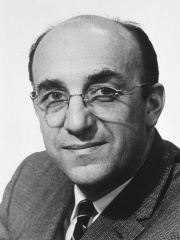
10. Roger Guillemin (1924 - 2024)
With an HPI of 72.93, Roger Guillemin is the 10th most famous French Biologist. His biography has been translated into 56 different languages.
Roger Charles Louis Guillemin (French pronunciation: [ʁɔʒe ʃaʁl lwi ɡijmɛ̃]; January 11, 1924 – February 21, 2024) was a French-American neuroscientist. He received the National Medal of Science in 1976, and the Nobel Prize for Medicine in 1977 for his work on neurohormones, sharing the prize that year with Andrew Schally and Rosalyn Sussman Yalow.
People
Pantheon has 132 people classified as French biologists born between 1507 and 1971. Of these 132, 8 (6.06%) of them are still alive today. The most famous living French biologists include Françoise Barré-Sinoussi, Emmanuelle Charpentier, and Jean-Pierre Changeux. The most famous deceased French biologists include Jean-Baptiste Lamarck, Georges Cuvier, and Georges-Louis Leclerc, Comte de Buffon. As of April 2024, 1 new French biologists have been added to Pantheon including Valerie Masson-Delmotte.
Living French Biologists
Go to all RankingsFrançoise Barré-Sinoussi
1947 - Present
HPI: 73.09
Emmanuelle Charpentier
1968 - Present
HPI: 67.20
Jean-Pierre Changeux
1936 - Present
HPI: 55.97
Nicole Marthe Le Douarin
1930 - Present
HPI: 53.79
Elizabeth F. Neufeld
1928 - Present
HPI: 52.83
Jacques Miller
1931 - Present
HPI: 52.66
Stanislas Dehaene
1965 - Present
HPI: 51.46
Valerie Masson-Delmotte
1971 - Present
HPI: 40.23
Deceased French Biologists
Go to all RankingsJean-Baptiste Lamarck
1744 - 1829
HPI: 82.06
Georges Cuvier
1769 - 1832
HPI: 77.69
Georges-Louis Leclerc, Comte de Buffon
1707 - 1788
HPI: 77.16
Louis Jean Pierre Vieillot
1748 - 1831
HPI: 75.90
Luc Montagnier
1932 - 2022
HPI: 75.42
Charles Richet
1850 - 1935
HPI: 73.45
André Michel Lwoff
1902 - 1994
HPI: 73.22
François Jacob
1920 - 2013
HPI: 73.09
Roger Guillemin
1924 - 2024
HPI: 72.93
René Antoine Ferchault de Réaumur
1683 - 1757
HPI: 72.84
Jean Dausset
1916 - 2009
HPI: 72.80
Adelbert von Chamisso
1781 - 1838
HPI: 72.38
Newly Added French Biologists (2025)
Go to all RankingsOverlapping Lives
Which Biologists were alive at the same time? This visualization shows the lifespans of the 25 most globally memorable Biologists since 1700.




